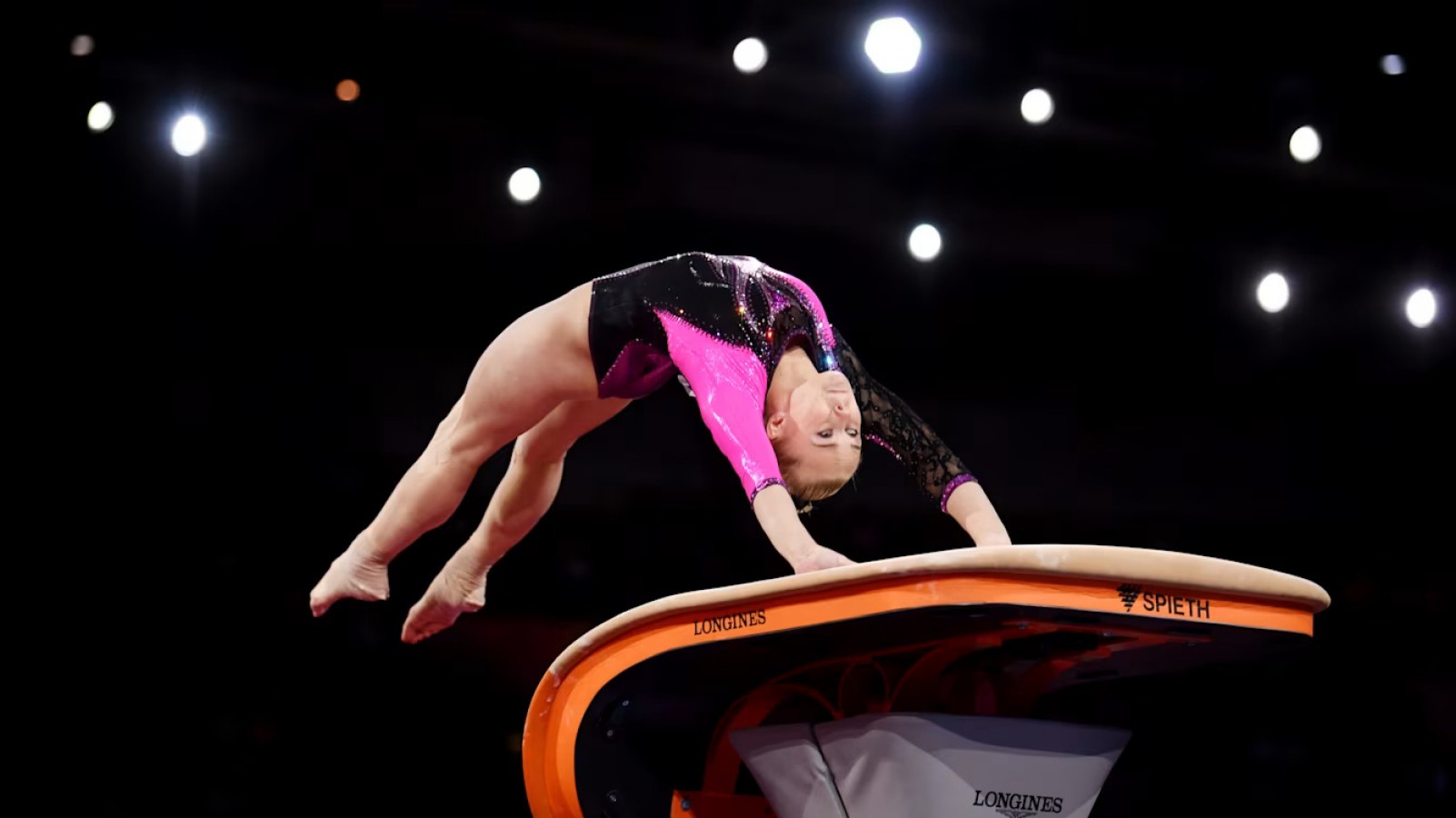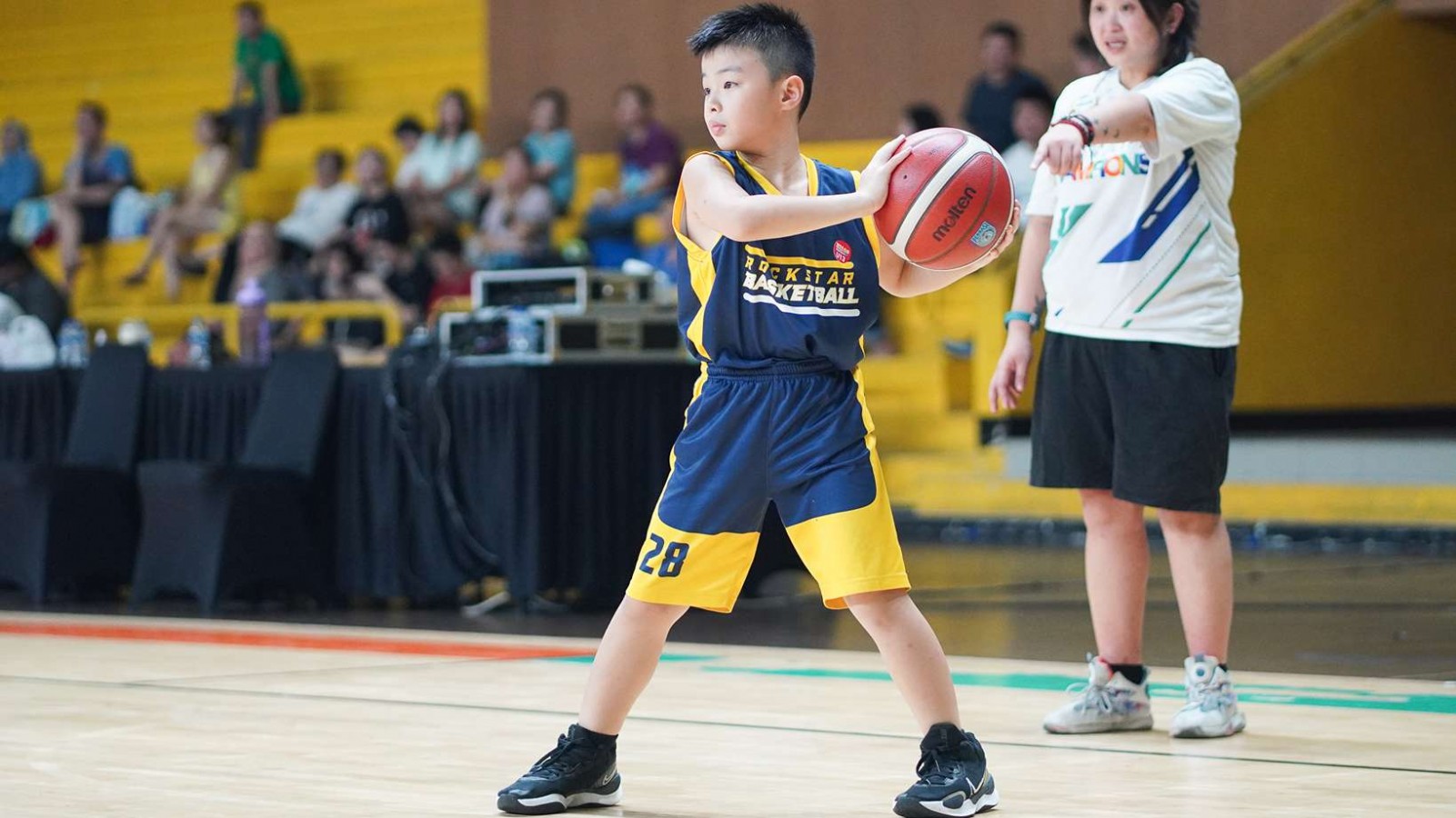Mastering Vault Routines in Gymnastics

Vaulting in gymnastics is one of the most dynamic and exhilarating events to watch. It showcases the athlete's power, agility, and precision as they propel themselves over a vaulting apparatus.
To understand this captivating discipline better, this guide will provide you with a comprehensive overview of vaulting in gymnastics.
What is Vaulting?
Vaulting is a gymnastics discipline where athletes perform dynamic maneuvers over a vaulting table or horse. While vaulting might seem daunting, it's a skill that can be mastered through practice, dedication, and proper technique. Vaulting is an essential routine in Testing & Competitions like Gymnastic Testing and Gymnastic Elite Championship.
Every gymnast performs a vault using a piece of equipment known as the table, which is a slightly inclined metal apparatus covered with padding and springs. For male gymnasts, the table is positioned at a height of 4 feet 5 inches (135 cm), while for females, it's set at 4 feet 3 inches (125 cm).
In 2001, there was a modification to the apparatus, transitioning from a long cylindrical structure akin to the pommel horse to the current table. Consequently, it's sometimes still called the vaulting horse. The newer vaulting table is designed with safety in mind, featuring a larger push-off area, measuring almost 4 feet in length and about 3 feet in width.
Types of Tumbling Techniques
Vaults are categorized into five distinct groups, known as families. The most commonly executed families include the front handspring style, the 1/4 turn in pre-flight (referred to as Tsukahara or Kasamatsu depending on the technique), and the round-off entry (often dubbed Yurchenko-style).
In prestigious competitions such as the Olympics, world championships, and US national championships, gymnasts execute one vault in both team and individual all-around events, while in individual vault finals and event finals qualifications, they perform two vaults from different families.
Competitors have the liberty to choose any vault they prefer, typically opting for the most challenging one they can execute successfully.
The Phases of a Vault
A successful vault comprises several key phases, each demanding precision and technique:
1. Approach Run
The gymnast begins their approach run, building momentum and speed towards the vaulting table.
2. Pre-Flight
As the gymnast nears the vaulting table, they initiate the pre-flight phase, focusing on their body alignment and positioning for takeoff.
3. Takeoff
With precise timing and explosive power, the gymnast launches off the springboard or vaulting table, propelling themselves into the air.
4. Flight
During flight, the gymnast executes twists, flips, or rotations, showcasing their aerial prowess and control.
5. Post-Flight
As the gymnast descends towards the landing area, they focus on maintaining body control and preparing for a smooth landing.
6. Landing
The final phase involves sticking the landing, demonstrating balance, control, and stability.
How to Score a Vault in Gymnastics
In gymnastics competitions, vaults are scored based on several criteria, including difficulty, execution, and landing. Here's how the scoring process typically works:
A. Difficulty
Each vault has an assigned difficulty value based on its complexity and technical requirements. Gymnasts can choose from a variety of vaults, ranging from simpler maneuvers to more challenging ones involving multiple twists and flips.
B. Execution
Judges assess the execution of the vault, considering factors such as form, technique, height, and amplitude. A clean, precise execution with minimal deductions will result in a higher score.
C. Landing
The landing is crucial in determining the overall quality of the vault. A controlled, stable landing with minimal steps or deductions will enhance the gymnast's score.
D. Consistency
Gymnasts are also evaluated on their consistency and ability to perform the vault consistently well throughout the competition. Consistency demonstrates mastery and reliability in executing the skill under pressure.
Can You Do Vault in Gymnastics?
Vaulting in gymnastics needs discipline that combines athleticism, artistry, and precision. By mastering the fundamental techniques and practicing diligently, gymnasts can elevate their vaulting skills to new heights and achieve excellence in competitions and performances.
Remember to always prioritize safety, proper technique, and consistent practice to excel in this dynamic and thrilling aspect of gymnastics.
Additionally, please note that to reach the Vault, you must excel the basic techniques of Gymnastics. At Rockstar Academy, gymnastics is included in the Sports & Performing Arts programs.
This academy was established to nurture children's hobbies and interests, so parents need not be confused when seeking a trusted institution with experienced mentors.
Plus, with Rockstar Academy's free trial, kids can try the program they want first without paying. Rockstar Academy has already expanded to 16 locations across the Jakarta area. All programs feature progressions from beginner to advanced levels, designed to challenge students and encourage consistent improvement.
FAQ
What is vaulting in gymnastics?
Vaulting in gymnastics refers to an apparatus-based event where gymnasts perform acrobatic maneuvers, typically involving springboards or vaulting tables, to execute jumps, flips, and twists.
What is the purpose of the vault in gymnastics?
The vaulting event in gymnastics assesses a gymnast's speed, power, and technique in executing explosive movements over the vaulting apparatus. It contributes to the overall score in gymnastics competitions.
What are the basic elements of a vault?
A vault typically consists of a run-up, a springboard or vaulting table for takeoff, flight phase where gymnasts perform aerial maneuvers, and a landing area where they aim to land cleanly and securely.
How is a vault scored in gymnastics?
Vaults are scored based on difficulty, execution, and landing. Difficulty is determined by the complexity of the maneuvers performed, execution evaluates the precision and form of the movements, and landing assesses how cleanly the gymnast lands and maintains control.
What are some common types of vaults?
Common vaults include the handspring, Tsukahara, Yurchenko, and Kasamatsu, each named after the gymnast who popularized or invented the technique. These vaults vary in their takeoff and landing techniques.



